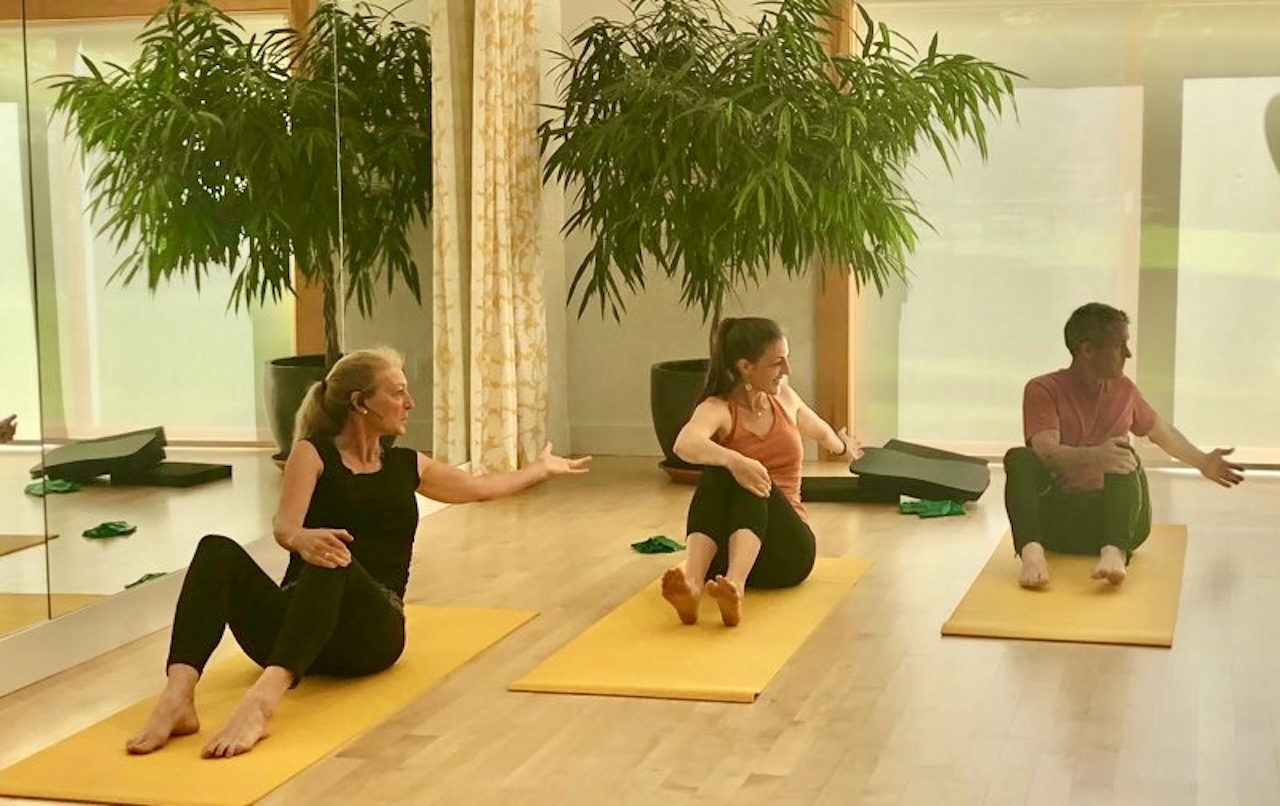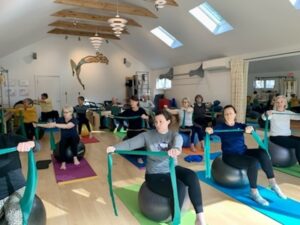Main Street News

Pelvic Health at Danica Center for Physical Therapy and Movement Education
You may have heard the term “pelvic health” floating around more frequently, but what exactly is pelvic health? How do you know if you need pelvic floor physical therapy and what does it entail? I sat down with Dr. Bente Dahl-Busby, a Doctor of Physical Therapy and owner of the Danica Center in Sharon, CT, and Dr. Sabina Busby, a Doctor of Physical Therapy at the Danica Center with Board Specialist Certifications in both pelvic health and orthopedics to learn more about pelvic health. Both Bente and Sabina are also Nationally Certified Pilates Instructors.

What is pelvic health?
“Pelvic health refers to the pain-free movement and function of everything within and around the pelvis, as well as how it relates to mobility and daily activities. It includes bowel and bladder function, such as urinary continence, pain free movement and sexual function, pregnancy and postpartum, bone health, as well as core strength and whole body movement control for everyone across the gender spectrum,” said Bente.
“Physical therapists who are specifically trained in pelvic health are able to help patients with many situations and complaints stemming from and involving the pelvis. Everyone has a pelvis and a pelvic floor. We have the training and the ability to help patients increase the comfort, strength, function, and coordination of that part of the body, through patient education, manual therapy techniques and exercises, while still keeping the whole person in mind,” added Sabina.
How do you know if you need pelvic floor physical therapy?
“Many symptoms can be related to the pelvic floor and helped with physical therapy,” Sabina said. If, for example, you are:
- Leaking urine when you sneeze or cough
- Can’t reach the bathroom before you start peeing
- Experience pain within or around the pelvis or have pain with sexual activity
- Are pregnant or had a baby (vaginally or C-section)
- Have undergone pelvic or abdominal surgery
- Feel heaviness in the pelvis
- If you have been diagnosed with: pelvic organ prolapse, endometriosis, constipation
- If you have been diagnosed with Osteoporosis or Osteopenia
- Have had breast, ovarian, prostate, bladder, or bowel cancer
- Experience low back or hip pain
All of these and more symptoms/problems can be helped by seeing a physical therapist who is a pelvic health specialist.
Bente explained that pelvic health patients are an often overlooked and underserved population, yet their symptoms and problems are typically quite common. In many cases, a person may not realize that the symptoms they are experiencing can be helped with physical therapy.
“People with back or knee pain usually talk about it freely, but if you have issues stemming from the pelvis or pelvic floor, you might not feel comfortable sharing your story and therefore be unsure as to whether anything can be done to help it,” Bente explained.
“There’s an entire aisle in every Target dedicated to adult pads, and someone’s buying them! If you’re feeling it, someone else probably is too,” Sabina added.
While many patients come to Danica Center via word-of-mouth, they are also often referred by gynecologists/obstetricians, urologists, gastroenterologists and internists. More recently, Sabina and Bente are seeing many pregnant and postpartum women who have been referred by local mom groups.

What kinds of pelvic health treatment do you provide at Danica Center?
Education is one of the most important ways in which Bente and Sabina can help and empower their patients.
“I have noticed that people often are not very aware of their own anatomy,” Sabina said. “I show everyone the pelvic model and we go in depth explaining what everything is, what it’s supposed to do, and how it should feel. We provide guidance to help patients become more mindful about the interconnectedness of the body, so they can better interpret what their bodies are telling them and respond appropriately,” she added.
 Individualized treatments vary and may include a combination of education, manual techniques, breathing and exercise to help improve pelvic floor strength or to decrease tension. The physical therapists at Danica Center also offer and utilize Pilates exercises with most pelvic health patients.
Individualized treatments vary and may include a combination of education, manual techniques, breathing and exercise to help improve pelvic floor strength or to decrease tension. The physical therapists at Danica Center also offer and utilize Pilates exercises with most pelvic health patients.
“We offer individualized sessions, small group sessions or weekly Pilates classes. Pilates involves instruction and attention to breath, pelvic floor and core control and helps the patient move with a greater sense of safety and efficiency,” Bente explained.
“The primary way for patients to heal and be able to help themselves avoid future problems is to have a good understanding of what’s happening in their body and a willingness to participate in their healing process,” Bente said.
Bente and Sabina have found that for many people, it might be difficult to decipher what a particular sensation means – whether that’s pain, muscle tightness, etc. – and from which part of the body the sensation stems.
“We see a lot of people suffering from low back pain who actually have some pelvic girdle dysfunction, as well,” Sabina said. “We know from research that 95% of people with complaints of low back pain have a pelvic issue, so we may end up diverting to or including the pelvic floor in the program.”
“We always take a holistic approach and look at the whole person. When someone comes to us with complaints related to the pelvic floor, I always look at the whole body and along with the patient, we create a plan aimed at restoring movement, function, and a better balance in the body, so the person can function with greater ease, joy, and spontaneity,” Bente said.
Prevention is key 
Sabina also stressed that many pelvic floor issues are largely preventable. She has many older patients who ask her how they could have prevented the issues that they’re having now. The answer is almost always to have done pelvic floor therapy years ago both in everyday life and after they had their babies.
“If you do it now, you can prevent a lot down the road,” Sabina said. “Prior to working here, I worked out of a clinic in Colorado that focused solely on chronic pelvic pain. If it’s complicated, come to me.”
Sabina and Bente agree that it’s all about finding the right person to suit your needs. At Danica, they strive to make their patients as comfortable as possible.
“Instead of adding years to your life, we’re hoping to be adding life to your years,” Bente said. “If you’re going to be around longer, you had better know how to feel well in order to remain comfortable and active into older age!”
To learn more about the Danica Center, visit their website danicacenter.com.


